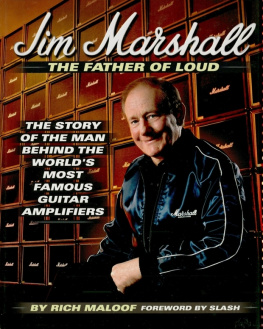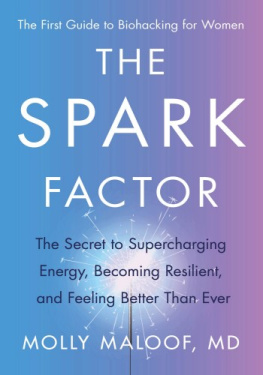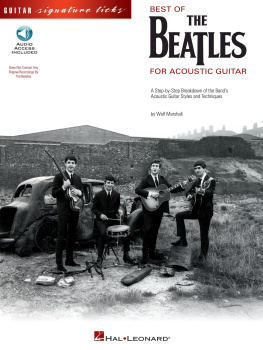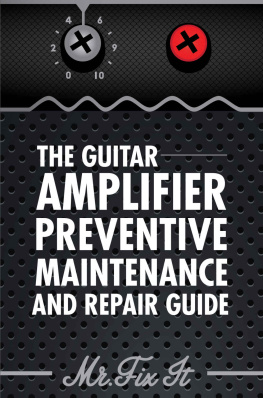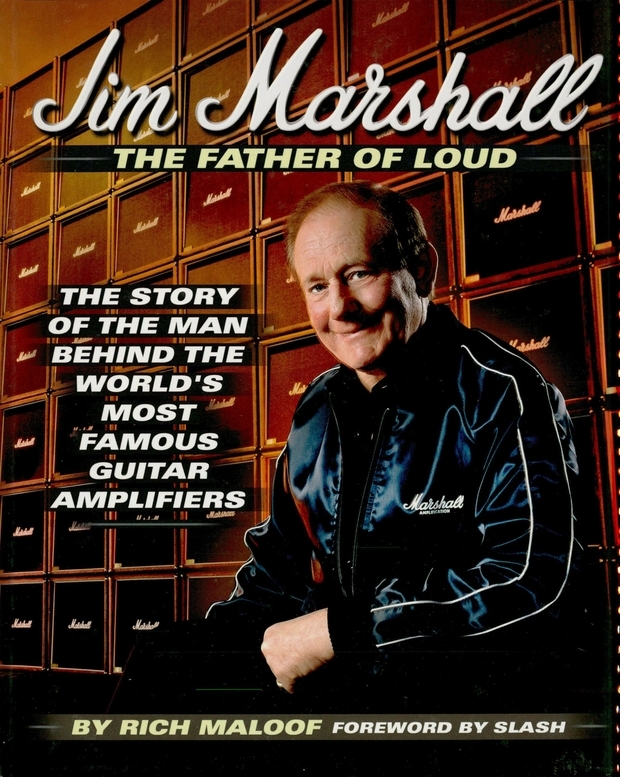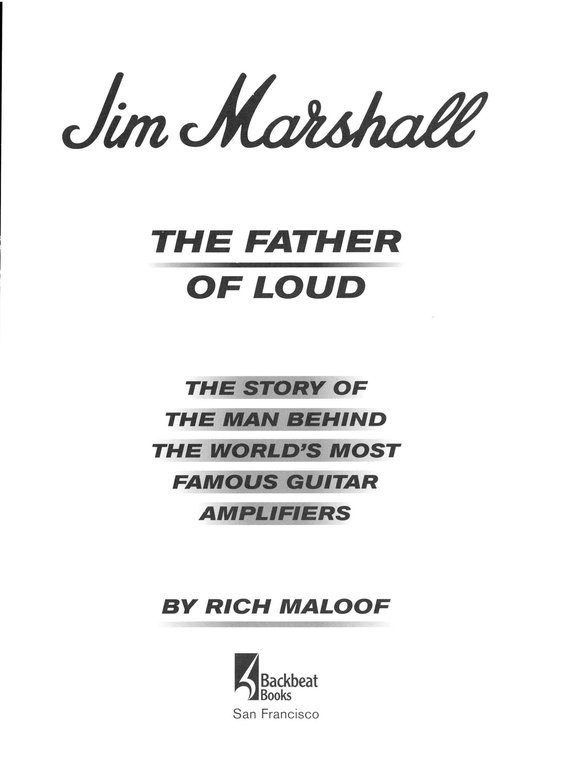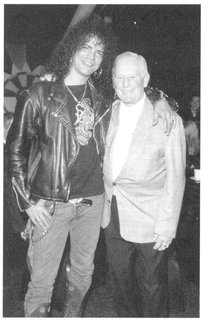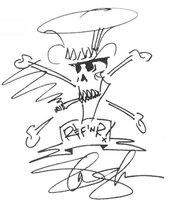Copyright 2004 by United Entertainment Media, Inc. All rights reserved. No part of this book covered by copyrights hereon may be reproduced or copied in any manner whatsoever without written permission, except in the case of brief quotations embodied in articles and reviews. For information, contact the publishers.
Foreword by Slash
Pretty much from the very first moment I got into actually playing guitar, I just knew that the only way I was going to get that fat, warm, rock n roll, A chord sound I wanted was from a Marshall. How did I know that? It was pretty *$#%ing obvious, really. Everyone I thought sounded coolfrom Jimi Hendrix to Aerosmith, and everybody in betweenall had Marshalls. So for me, and for many others, it was simpleif you wanted to have that thing and be as great as the guitarists you listened to and went to see in concert, then you just had to have that one quintessential piece of equipment: a Marshall. And there were no ifs, ands, buts, or in-betweens about it. So, from that moment on my main goal was to get enough money together to be able to afford one. Needless to say, I went through years and years of trying to get my first Marshall ...
I can still remember the first time I ever plugged into oneit was amazing, a truly life-changing experience. The only problem was it wasnt mine; it was someone elses, and thats sort of like driving another guys Ferrari when your *$#%ing car is a Honda Civic! I eventually got a Marshall of my own and it was, of course, a used onea 50-watt Super Lead head. It sounded killer, and Ill never forget it because I felt like Id achieved a lifelong goal.
I find it fascinating that theres this one make of amp thats been the standard of the industry for so long. No matter what people do to try to come up with something that sounds like it, or better than it, or something thats a little more complex or whatever, they always miss the mark. I mean, your typical Marshall is by no means a complicated amplifier, but, at the same time, it has a characteristic to it that seems to be inimitable. Theres something so unique about a Marshall that you can almost picture the sound, if you know what I mean! Its the only amp thats ever done that.
High-powered combo: Slash and Jim.
Im not totally closed-minded, but Im also one of those if it aint broke, dont fix it kind of guys, too. I have to admit that Im a little biased when it comes to Marshall, but I do keep my ears and mind open, and I do listen to what people say about this, that, and the other. But, that all said, I still havent heard anything else that does it for me. Theres a relationship between whats going on in your head, whats coming out through your fingers on your instrument, and then whats actually coming out of the speakers. Its all relative and, all things considered, you can play through a whole bunch of different things, but, personally speaking, for me to sound like me, I have to have a Marshall to do itthats just the way it is.
In addition to sounding great, Marshall has a visual aura thats *#$%ing larger than life too. To me the all-time best English heavy metal band is Judas Priest, and that wall of Marshalls they had set up on their Screaming for Vengeance tour when I saw them at Long Beach Arena in the early 80s, was probably one of the most exciting visuals for a young rock guitar player to ever see. Ill certainly never forget it. And that goes for a lot of other great bands, too, over the yearseven on a smaller scale like at the local L.A. clubs like the Troubadour and the Roxy. Even if you didnt know who the band was, they were automatically cool if they had Marshalls. When youre young and impressionable, when you walk into a club and see a Marshall on the stage, youre awed before a single note has been played because you know youre gonna hear some loud guitar! And, back in the day, you also knew that the chances were high that the guy was gonna be great too, because if you could afford to have a Marshall, then you had to be pretty good! That was certainly true on two memorable occasionsQuiet Riot at the Starwood when Randy Rhoads was still in the band, and early Van Halen.
Like I said earlier, its amazing for a piece of equipment to stand the test of time and become such an iconic thing. I still wonder to this day if Jim realized that he was about to create a musicians staple for the next *$%#ing 40-plus years when he stuck the tubes in his very first amp?!
The equipment aside, over the years Ive been fortunate enough to have Jim take me under his wing, so to speak, build an amp for me during a time of crisis, and then put my name on it. Thats one of my proudest moments since I got this whole rock thing going and is probably the most flattering gesture ever put towards me. Then, as a bonus, Ive gotten to hang out with Jim a bunch of times and discover that hes charming and down-to-earth with a great blue-collar I work for a living ethic. Hes someone whos never been affected by his success and is still totally focused on the quality of the amps that bear his name. Hes also very kind and soft-spokennot someone youd expect to make the loudest, rudest guitar amp in the world!
As far as Im concerned, Jim and Les Paul are kindred spirits. Theyre definitely cut from the same cloth, and the heart and soul theyve both poured into their gear makes me feel very proud to be using it. With all the craziness and bullshit that goes on in this business, its reassuring to know that the things you keep closest to you are made by genuinely nice people. Thats why Im beyond honored to have been asked to write this foreword.
Thanks for everything, Jim. Im darn proud to be part of such a great rock n roll story.
Cheers; your friend

